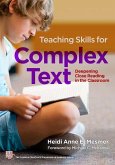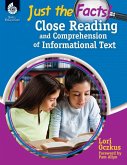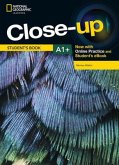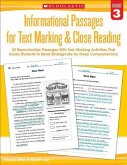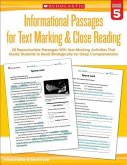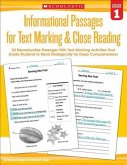Close-reading strategies help students develop the literacy and critical-thinking skills essential for the rest of their lives. Close Reading in the Secondary Classroom offers high school and middle school educators extensive guidance on how to introduce close-reading strategies to students and help them improve their reading comprehension skills and critical thinking. Learn how to select close-reading examples and passages, elicit deeper question formation, facilitate positive classroom discussion, and assess your students' reading comprehension skills and literacy progress. Use research-based close-reading instruction strategies to increase student literacy and critical-thinking skills: * Understand the importance of close reading, prereading, and post-reading activities. * Learn how to choose appropriate literary or informational texts for close reading. * Pass on tools necessary for literary analysis and annotating text. * Develop thought-provoking questions and discussion that deepen text analysis and reading comprehension skills. * Assess students' creative- and critical-thinking skills. Contents: Introduction Chapter 1: Research and Theory Chapter 2: Prereading Chapter 3: Reading Twice and Annotating Chapter 4: Generating Questions and Reading Analytically Chapter 5: Discussing as a Class or Analyzing Individually, and Using Processing Activities Chapter 6: Planning and Assessing Close Reading Epilogue Appendix A: Answers to Comprehension Questions Appendix B: Extended Examples of Close Reading


